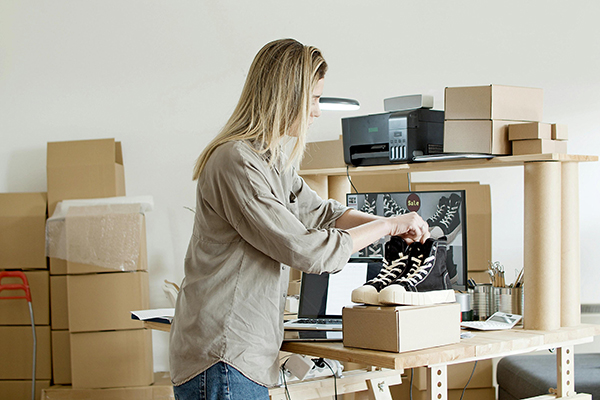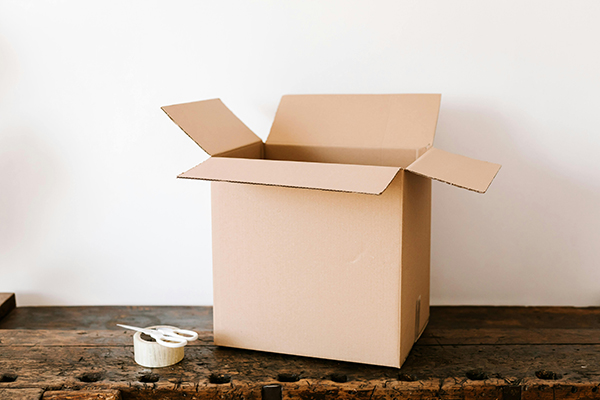Moving can be a n exciting yet daunting task, especially when packing up the heart of your home - the kitchen. With its abundance of fragile items and various shapes and sizes, packing your kitchen requires careful planning and organization. However, with the right approach and helpful tips, you can streamline the packing process and ensure your kitchen items arrive safely at your new home. In this guide, we'll walk you through step-by-step instructions on how to pack your kitchen efficiently and effectively.
Get Home Value
Start Early and Plan Ahead
Packing your kitchen is a significant undertaking, so you mush start early. That will give you ample time to complete the task without feeling rushed. Begin by creating a detailed plan outlining which items you'll pack first and how to tackle the process. Consider setting aside a specific area or room in your home dedicated solely to packing your kitchen items, allowing you to work methodically without cluttering other spaces.
Gather Packing Supplies
Gather all the necessary packing supplies before you begin packing your kitchen. That includes sturdy boxes in various sizes, packing paper, bubble wrap, packing tape, markers for labeling, and any specialized containers for fragile items such as dish barrels or dividers. Having everything you need on hand will prevent interruptions during the packing process.

To pack your kitchen like a pro, gather all the necessary packing supplies before you begin packing your kitchen.
Declutter and Organize
Before you start packing, take the opportunity to declutter your kitchen and remove any items you no longer use or need. Go through your cabinets, drawers, and pantry, and set aside items for donation, recycling, or disposal. As a result, you'll lighten your load and make packing and unpacking more manageable. Organize your remaining items into categories such as cookware, dishes, glassware, and utensils to streamline the packing process.
Pack Fragile Items with Care
The kitchen is home to many fragile items, such as dishes, glassware, and ceramics. These items require extra care when packing. Start by lining the bottom of boxes with crumpled packing paper or bubble wrap to provide cushioning. Wrap each item individually with packing paper or bubble wrap, focusing on protecting delicate edges and handles. Fill empty spaces in the box with additional packing paper or bubble wrap to prevent items from shifting during transit.
Use Small Boxes for Heavy Items
When packing heavy items such as canned goods, small appliances, or cookbooks, opt for smaller boxes to distribute the weight evenly and prevent boxes from becoming too heavy to lift. Line the bottom of these boxes with extra reinforcement, such as packing peanuts or crumpled paper, to provide added support. Pack heavier items at the bottom of the box, layering lighter items on top to avoid crushing delicate items.

Pack heavier items at the bottom of the box, layering lighter items on top to avoid crushing delicate items.
Search For Offices
Secure Liquids and Non-Perishables
To prevent spills and leaks during the move, take extra precautions when packing liquids and non-perishable food items. Seal bottles, jars, and containers with packing tape or plastic wrap to prevent them from opening accidentally. Place these items in sealable plastic bags or containers to prevent leaks. Pack non-perishables food items tightly in boxes, using crumpled paper or packing material to fill empty spaces and minimize shifting.
Pack Your Kitchen: Label Boxes Clearly
Proper labeling is key to staying organized during packing and making unpacking more manageable at your new home. Clearly label each box with its contents and the room where it belongs using a permanent marker. Consider using color-coded labels or stickers to differentiate further boxes belonging to the kitchen from those destined for other rooms. That will help movers or helpers know where to place boxes upon arrival and make it easier for you to locate essential items during unpacking.

Proper labeling is key to staying organized during the packing process and making unpacking more manageable at your new home.
Utilize Space-Saving Packing Techniques
Maximize the space in your moving boxes by utilizing space-saving packing techniques such as nesting items together or utilizing unconventional spaces. For example, tuck dish towels or linens inside pots and pans to save space and provide extra padding. Stack mixing bowls nesting containers withing each other to save room and keep them from moving around during transit. Utilizing every inch of available space will help reduce the number of boxes needed and make unpacking easier. By employing these clever packing strategies, you can make the most of your kitchen packing efforts and ensure a smooth transition to your new space.
Pack Essentials Separately
As moving day approaches, set aside a box or a suitcase containing essential items you'll need immediately upon arrival at you new home. That may include basic cookware, utensils, dish soap, cleaning supplies, and snacks. Keep this box easily accessible during the move, either in your vehicle or at the top of your moving truck. By doing so, you can quickly access these items without having to unpack everything right away.
Take Special Care of Appliances
If you're moving large kitchen appliances, take special care to prepare them for the move. Clean and defrost your refrigerator and freezer well in advance, removing all food and wiping down the interior. Secure any loose parts or shelves, and tape doors shut to prevent them from opening during transit. For other appliances, refer to the manufacturer's packing and transporting guidelines instructions.
Consider Hiring Professionals
If packing your entire kitchen overwhelms you, consider hiring professional movers who also offer packing services. Pro Alliance Services is a prime example of such a versatile moving company. They have the experience, expertise, and packing materials necessary to pack your kitchen efficiently and safely. While this option may incur additional costs, it can save you time and alleviate stress, allowing you to focus on other aspects of your move.
Conclusion
In conclusion, packing your kitchen can be a manageable process with proper planning and organization. Start early, declutter and organize your belongings, gather packing supplies, and pack your kitchen carefully to ensure they arrive safely at your new home. Label boxes clearly, pack essentials separately, and take special care of appliances to streamline the moving process. If you dare to tackle the task yourself, these tips will help make you kitchen packing experience smoother. Happy moving!